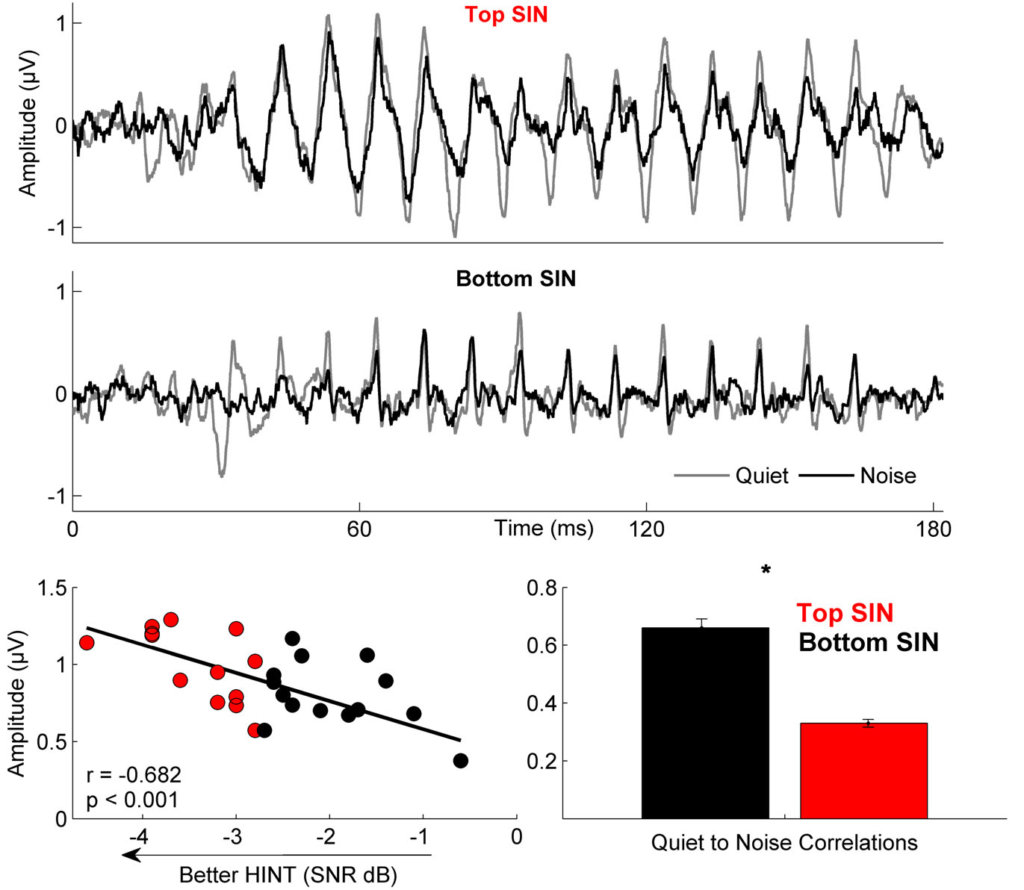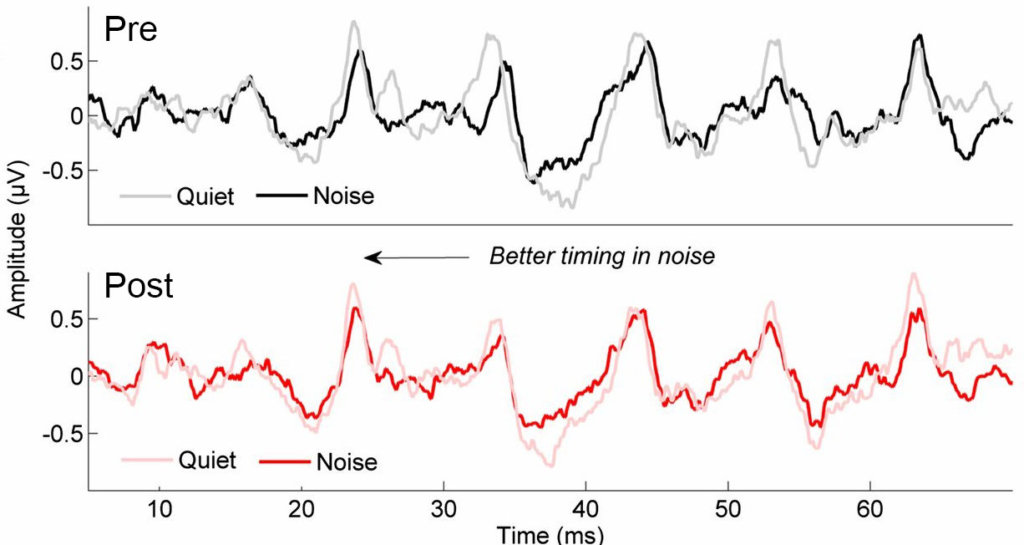Setting a Great Example
Nina’s work as a teacher and researcher has had a great impact on students and colleagues. Her mentorship was truly a gift as I transitioned from being a clinician to a clinician-scientist. I was an older student when I joined Nina’s Auditory Neuroscience Lab at Northwestern in 2007, having worked as a clinical audiologist for twenty-six years in various settings. Because it had been over thirty years since I had taken any basic sciences courses, I was apprehensive about my ability to tackle the neuroscience classes needed as a foundation for pursuing research in Nina’s lab. During those first uncertain years, Nina often checked in to ensure that I was managing the academic load. She was unceasing in her encouragement and helped me to appreciate the unique strengths I brought to research, both from a clinical background and from the perspective of being a non-traditional older student. Thus, it was fitting that I pursued the aging work in the lab!
While working as an audiologist, I was frustrated with my inability to predict my patient’s everyday communication abilities from the audiological evaluation. Therefore, I was happy to work on the NIH grant entitled, “Neural correlates of auditory function and training in older adults,” awarded to Nina and her colleague at Northwestern, Sumitrajit Dhar. Work from this grant led to several key findings. We were interested in the neural mechanisms that underlie speech-in-noise difficulties in older listeners, and found that neural responses of older listeners with better speech-in-noise performance were more resistant to the degrading effects of noise than listeners with poorer performance (Figure 1).1 We learned that aging is associated with reduced phase-locking and response consistency in responses to speech syllables (Figure 2).2 These differences appeared independent of hearing loss, as there were no significant hearing threshold differences through 2000 Hz between younger and older participants. Cognitive factors also make an essential contribution to speech-in-noise performance, especially auditory short-term and working memory, and auditory attention.3 Given that these problems occur in individuals with normal hearing, it is apparent that hearing aid amplification alone may not be a sufficient remedy for speech-in-noise difficulties, motivating our desire to test the efficacy of an auditory-based cognitive training program in older listeners. We found that 40-hrs of this home-based auditory training improved performance on the Quick Speech-in-Noise test4 and increased neural precision of responses to syllables presented in noise (Figure 3).5 Some people have asked how Nina’s lab can possibly be so productive. One big reason for this is that Nina’s turn-around time reviewing our drafts is usually less than 24 hours. What a hard act to follow! Under Nina’s guidance, I published 17 first-author manuscripts based on my candidacy project and my dissertation work. This body of work provided an excellent foundation for the aging and plasticity work that I have pursued as a faculty member at the University of Maryland.




In addition to publishing manuscripts, Nina encouraged me to present my results at many national and international conferences, including the Association for Research in Otolaryngology MidWinter meeting, the American Auditory Society annual conference, the Aging and Speech Communication Conference, and the International Symposium on Auditory and Audiological Research. Nina insisted that her students have plenty of presentation practice time during lab meetings. We were to pretend that we were presenting at actual conferences by standing in front of the group. Nina has spoken at hundreds of conferences, and those who have attended can attest that she is an engaging and dynamic speaker. I do not pretend to achieve Nina’s level of engagement. Still, I appreciate that I have developed a high level of comfort when speaking to an audience because of Nina's guidance. Attending conferences with Nina and other lab members was always an energizing experience, and Nina took care to introduce me to leaders in the field. I particularly enjoyed the big dinners that Nina treated us to while at these conferences.
One-on-one time with a mentor is an important part of Ph.D. training. I most appreciate the way Nina welcomed me into her office for our meetings. She never made me feel that she was too busy to talk but was always delighted to see me. What a great example to follow as I now mentor my own students!
- Anderson S, Parbery-Clark A, Yi H-G, Kraus N. A neural basis of speech-in-noise perception in older adults. Ear Hear 2011;32:750-757. https://doi.org/10.1097/AUD.0b013e31822229d3.
- Anderson S, Parbery-Clark A, White-Schwoch T., Kraus N. Aging affects neural precision of speech encoding. J Neurosci 2012;32:14156-14164. https://doi.org/10.1523/jneurosci.2176-12.2012.
- Anderson S, White-Schwoch T, Parbery-Clark A, Kraus N. A dynamic auditory-cognitive system supports speech-in-noise perception in older adults. Hear Res 2013;300:18–32. https://doi.org/10.1016/j.heares.2013.03.006.
- Anderson S, White-Schwoch T, Parbery-Clark A, Kraus N. Reversal of age-related neural timing delays with training. Proc Natl Acad Sci U S A 2013;110:4357–62. https://doi.org/doi:10.1073/pnas.1213555110 4. Killion M, Niquette P, Gudmundsen G, Revit L, Banerjee S. Development of a quick speech-in-noise test for measuring signal-to-noise ratio loss in normal-hearing and hearing-impaired listeners. J Acoust Soc Am 2004;116:2935–405. https://doi.org/10.1121/1.1784440.

